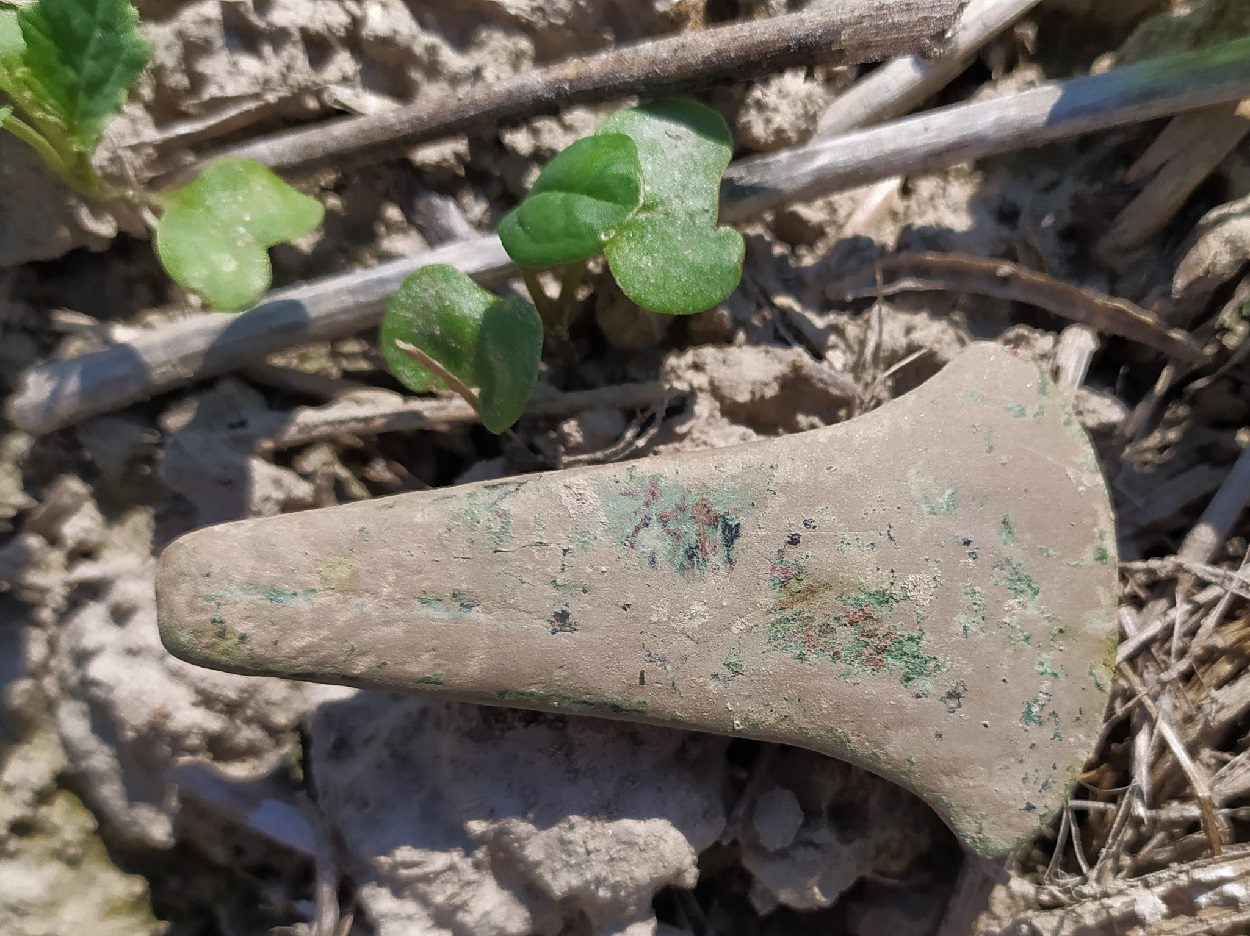An axe from the 4th to 3rd millennium BC has been discovered in Poland’s Hrubieszów district.
The Lublin Provincial Conservator of Monuments has described the copper axe as being 7.4 cm in length, with a wide fan-shaped blade 4.1 cm wide, and a rectangular convex head measuring 0.9 cm x 0.6 cm.
The axe has been associated with the Cucuteni–Trypillia culture, a Neolithic–Chalcolithic people who inhabited Southeast Europe.
The population spread of the culture extended from the Carpathian Mountains to the Dniester and Dnieper regions, centred on modern-day Moldova and covering substantial parts of western Ukraine and northeastern Romania.
The discovery of a copper axe in the town of Matcze within the Horodło commune (Lubelskie) presents a puzzling enigma. Poland lies beyond the geographical range of the Cucuteni–Trypillia culture, and further complicating matters is the absence of similar typologies of axes from that era within Poland itself.
“Our axe was made in a quite simple ‘primitive’ casting method in a flat-convex form, no longer used in the developed metallurgy of the Bronze Age. Therefore, it was necessary to pay attention to the earlier Neolithic era. Unfortunately, in the inventories of Neolithic cultures from Poland there is no such equivalent,” the Lublin conservator said.
The puzzle was solved when the researchers came across a publication with an identical copper axe found in the town of Szczerbanivka in the Kiev region, Ukraine. This axe was discovered alongside fragments of pottery attributed to the Cucuteni–Trypillia culture, providing context and a date for the axe from Matcze.
The Lublin conservator also added: “It is true that we have recorded finds of Trypillian culture pottery from Gródek, Hrubieszów commune, and the presence of this ax in nearby Matcz can be considered as confirmation of the settlement of people of this culture also in eastern Poland. So we are probably dealing with the oldest find of a copper product in Poland, which would be a great sensation.”
Header Image Credit : Lublin Provincial Conservator of Monuments
Sources : PAP





